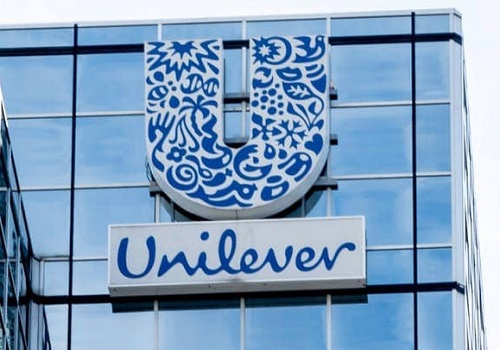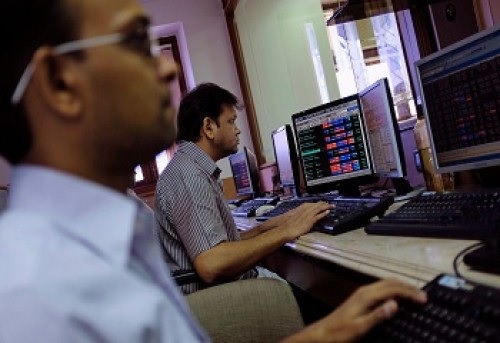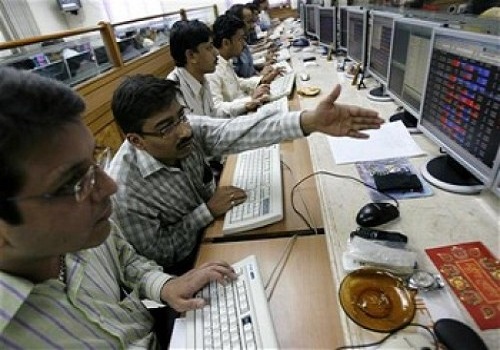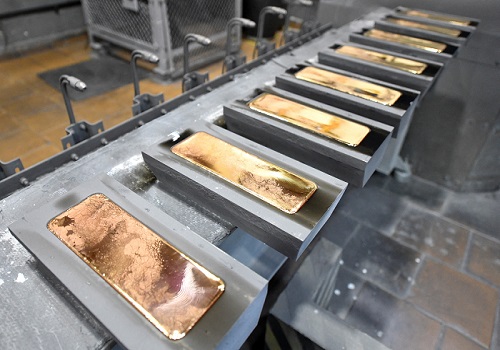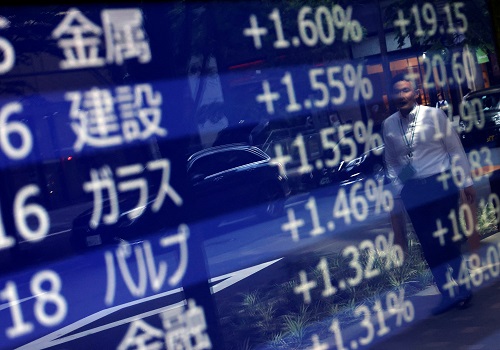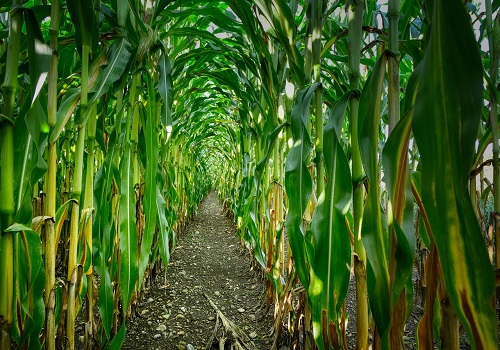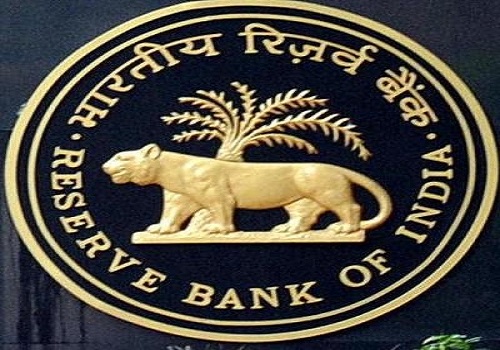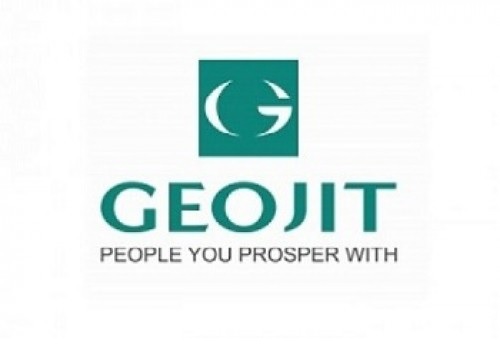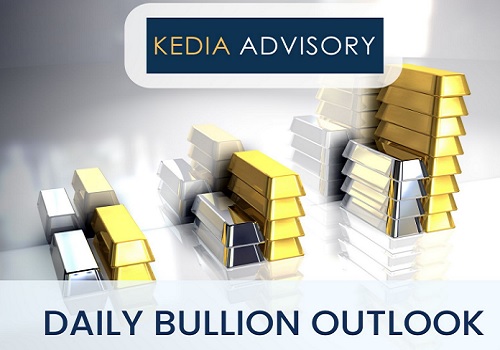Aluminium trading range for the day is 240.8-245.8 - Kedia Advisory

Gold
Gold prices rose by 0.28% to Rs.76,903 per 10 grams, supported by growing expectations of a U.S. Federal Reserve rate cut in December. Markets now price in a 72% probability of a 25-basis-point rate cut at the December 17–18 meeting, following comments from Fed Governor Christopher Waller, who cited restrictive monetary policy and balanced labor markets. UBS forecasts an additional 100 bps of easing through 2025 after this month's expected cut. Global gold demand remained steady year-on-year at 1,176.5 metric tons in Q3, with increased investment activity balancing weaker jewelry consumption and reduced central bank purchases. Notably, opaque over-the-counter (OTC) gold flows surged 97% to 136.5 tons, while physically-backed gold ETFs saw their first positive quarter since Q1 2022, with inflows of 95 tons. However, bar and coin investments dropped by 9%, and jewelry demand fell by 12% despite strong growth in India. On the supply side, mine production hit a Q3 record, growing by 6%, while recycling increased by 11%.In physical markets, premiums remained stable in India at $3 an ounce, while China witnessed discounts of $19–$21 due to subdued demand. Singapore and Hong Kong saw mixed premiums ranging from $0.50 to $2.50 an ounce. Gold is under short covering, with open interest dropping by 0.79% to 12,277 contracts. Prices find support at Rs.76,675, with the next level at Rs.76,445. Resistance is pegged at Rs.77,120, with potential upward testing at Rs.77,335.
Trading Ideas:
* Gold trading range for the day is 76445-77335.
* Gold gains as recovering expectations of a U.S. rate cut in December weighed on the dollar.
* Fed's Waller says inclined to cut rates in December
* UBS said it expects the Fed to cut by 25 basis points in December, followed by another 100 bps of easing through 2025.
Silver
Silver surged by 1.53% to Rs.92,197 per kg, fueled by expectations of a U.S. Federal Reserve rate cut in December and geopolitical tensions in the Middle East. Dovish comments from Federal Reserve Bank of New York President John Williams and Governor Christopher Waller signaled a shift toward easing monetary policy, supporting market optimism. These developments, coupled with speculation about additional stimulus measures from China, bolstered silver's appeal amid rising demand for industrial metals. The Silver Institute predicts a 4% decline in the global silver deficit to 182 million ounces in 2024. Despite a 16% drop in physical investment, record industrial demand, particularly from sectors like solar panels and electric vehicles, is expected to elevate silver usage to 1.21 billion ounces. India’s silver imports soared to 4,554 tons in H1 2024, compared to 560 tons in the same period last year, driven by strong industrial demand and investor interest. On the supply side, mine production is projected to increase by 1%, led by growth in Mexico, Chile, and the United States, while recycling is set to rise by 5%. Exchange-traded products (ETPs) are poised for their first annual inflows in three years, reflecting renewed investor interest in silver. Silver is experiencing short covering, as open interest fell by 4.08% to 24,856 contracts. Prices find support at ?Rs.91,385, with the next level at Rs.90,570. Resistance is pegged at Rs.92,680, with potential testing at Rs.93,160.
Trading Ideas:
* Silver trading range for the day is 90570-93160.
* Silver gains as dovish comments from Fed official spurred traders to increase bets on an interest rate cut this month.
* Silver also received a boost from ongoing geopolitical tensions in the Middle East
* Fed's Williams eyes further cuts as price pressures cool further
Crude oil
Crude oil prices surged 2.6% to settle at Rs.5,929 per barrel, driven by expectations that OPEC+ will extend its current production cuts through Q1 2025. Saudi Arabia is also likely to lower crude prices for Asian buyers to the lowest levels in four years, signaling a competitive push in the region. Meanwhile, a 1.844 million-barrel draw in U.S. crude inventories, as per the EIA Petroleum Status Report, surpassed market expectations, further bolstering prices. However, gasoline and distillate stockpiles increased by 3.314 million and 0.416 million barrels, respectively, tempering some of the bullish momentum. On the demand side, the International Energy Agency (IEA) projects a surplus of over 1 million barrels per day (bpd) in global supply next year, driven by weakening economic activity in China and North America. The U.S. Energy Information Administration (EIA) revised its 2024 global demand forecast to 104.3 million bpd, 300,000 bpd lower than previous estimates. Similarly, U.S. oil demand and production forecasts for 2024 were adjusted downward to 20.5 million bpd and 13.22 million bpd, respectively, signaling slower growth expectations. The crude oil market witnessed fresh buying as open interest increased by 0.79% to 11,235 contracts, alongside a Rs.150 price gain. Support levels are identified at Rs.5,821, with a further test possible at Rs.5,713. Resistance is seen at Rs.5,997, and a break above this could push prices toward Rs.6,065.
Trading Ideas:
* Crudeoil trading range for the day is 5713-6065.
* Crude oil gains as OPEC+ is likely to extend its latest round of oil output cuts until the end of the first quarter.
* OPEC+, has been looking to gradually unwind production cuts through 2025.
* Saudi Arabia, is expected to cut crude prices for Asian buyers to the lowest levels in at least four years.
Natural gas
Natural gas prices tumbled 5.34% to settle at Rs.259 per mmBtu, weighed down by rising output and forecasts for milder weather that are expected to curb heating demand in the coming week. While colder-than-usual weather recently boosted consumption, utilities have been under less pressure to draw heavily from storage due to reduced heating demand projections. U.S. gas production averaged 101.5 billion cubic feet per day (bcfd) in November and increased to 101.8 bcfd in early December, though still below the December 2023 peak of 105.3 bcfd. Despite these trends, U.S. gas inventories remain robust. As of November 22, 2024, working gas stocks in the Lower 48 states stood at 3,967 billion cubic feet, marking a 3.5% year-on-year increase and a 7.2% surplus above the five-year average. The current storage levels reflect a strong starting point for the winter heating season, attributed to higher-than-average inventory levels entering the injection season. Notably, U.S. utilities withdrew 2 billion cubic feet of gas last week, defying expectations of a 3 billion cubic feet build, as colder temperatures spiked short-term demand. The market witnessed fresh selling pressure, with open interest surging by 43.78% to 22,527 contracts, while prices dropped by Rs.14.6. Natural gas is currently finding support at Rs.253.4, with a break below possibly leading to a test of Rs.247.7. Resistance is pegged at Rs.269.1, and a move above this level could push prices toward Rs.279.1.
Trading Ideas:
* Naturalgas trading range for the day is 247.7-279.1.
* Natural gas dropped pressured by an increase in output and forecasts for less cold weather
* US natgas storage volumes highest since 2016 as winter heating season starts, EIA says
* Inventories are currently 6% above the five-year (2019–23) average.
Copper
Copper prices rose 1.57% to settle at Rs.822.55 per kg, driven by optimism surrounding potential stimulus measures from Beijing during key political meetings this month. Expectations were further bolstered by a two-thirds drop in SHFE inventories to 108,775 tonnes, signaling tighter supply in the world's largest copper-consuming market. The Chinese manufacturing sector's continued expansion in November added to the positive demand outlook. Global market dynamics supported the uptrend, with the International Copper Study Group (ICSG) reporting a 131,000 metric ton deficit in the refined copper market for September, a sharp reversal from August's 43,000 metric ton surplus. Adjusted figures accounting for Chinese bonded warehouse inventories showed an even larger deficit of 149,000 metric tons. China's imports of unwrought copper rose 1.1% year-on-year in October to 506,000 metric tons, reflecting seasonal demand improvement and domestic inventory drawdowns. For the first ten months of 2024, copper imports climbed 2.4% to 4.6 million tons, while imports of copper concentrate increased by 3.3% to 23.36 million tons. Rising Yangshan premiums, peaking at $69 per ton in October, highlighted China's appetite for overseas cargoes. The market witnessed short covering, with open interest dropping by 10.35% to 7,268 contracts while prices gained Rs.12.75. Copper is finding support at Rs.811.4, with a break below potentially leading to Rs.800.3. Resistance is at Rs.830.3, and a move above this level could push prices toward Rs.838.1.
Trading Ideas:
* Copper trading range for the day is 800.3-838.1.
* Copper gains supported by expectations that Beijing may announce additional stimulus measures.
* Chinese manufacturing activity expanded for the second consecutive month in November, strengthening the demand outlook.
* SHFE inventories falling by two-thirds since the beginning of the month 6 to 108.775 tonnes.
Zinc
Zinc rose by 0.53% to settle at Rs.287.15 per kg, buoyed by expectations of additional stimulus following China's modest factory activity growth in November. A 10.6% decline in Shanghai Futures Exchange zinc inventories added support, reflecting tight supply conditions. The easing of zinc concentrate shortages, coupled with historically low smelter production of approximately 500,000 metric tons in Q3, provided a solid foundation for price stability. Global supply-side pressures have intensified as Trafigura Group withdrew over 97,225 tons of zinc from London Metal Exchange warehouses, marking the largest withdrawal in a decade. This move significantly reduced available stocks, leading to supply constraints and reversing price declines observed in late October. Meanwhile, the global zinc market posted a deficit of 79,500 metric tons in September, narrowing from an 85,000-ton deficit in August, according to ILZSG data. For the first nine months of 2024, the global deficit stood at 8,000 tons, compared to a surplus of 358,000 tons a year earlier. In September, China’s refined zinc production grew by over 2% month-on-month but declined by 8% year-on-year, surpassing forecasts. October production saw a marginal increase, driven by post-maintenance recovery in Inner Mongolia, Shaanxi, and Hunan, offsetting reductions in Gansu due to maintenance. Zinc witnessed fresh buying with a 4.38% rise in open interest, settling at 2,982 contracts as prices gained Rs.1.5. Support is at Rs.284.6, with a break potentially leading to Rs.281.8. Resistance is at Rs.288.8, and a move above could push prices to Rs.290.2.
Trading Ideas:
* Zinc trading range for the day is 281.8-290.2.
* Zinc gains as investors waiting for of additional monetary or fiscal stimulus from China.
* China’s factory activity expanded modestly in November.
* With the decline in smelter production in Q3, the tight supply of ore has been somewhat alleviated.
Aluminium
Aluminium prices rose by 0.47% to Rs.243.8 per kg as sentiment improved following supportive global and domestic data. Global aluminium producers have proposed higher premiums of $230-$260 per metric ton for January-March shipments to Japan, reflecting a 31%-49% increase compared to the current quarter. This surge is attributed to tighter supply concerns after China’s decision to cancel a 13% export tax refund on semi-manufactured aluminium products. China, the world’s largest aluminium producer, exported 5.5 million tons of unwrought aluminium and related products in the first ten months of 2024, a 17% year-on-year increase. October exports reached 577,000 tons, marking a 31% year-on-year jump, underlining robust demand. Aluminium ingot social inventories in China increased by 14,000 metric tons week-on-week to 553,000 metric tons, while outflows from warehouses rose to 132,300 metric tons, reflecting a steady market. China’s primary aluminium production grew 1.6% year-on-year in October to 3.72 million metric tons, with the first ten months recording a 4.3% increase to 36.39 million tons. Smelters maintained high operating rates in major producing regions like Shandong and Xinjiang, supported by profitability and firm demand. However, October’s daily output averaged 120,000 tons, slightly below September’s 121,667 tons. Aluminium is under fresh buying momentum, with open interest rising by 1.37% to settle at 3,408 contracts. Support is at Rs.242.4, with further downside at Rs.240.8. Resistance is seen at Rs.244.9, and a move above could push prices to Rs.245.8.
Trading Ideas:
* Aluminium trading range for the day is 240.8-245.8.
* Aluminium gains as recent data suggest the stimulus announcements are improving sentiment.
* Global aluminium producers have offered Japanese buyers premiums of $230-$260 per metric ton for January-March primary metal shipments.
* Aluminium inventories in warehouses monitored by the Shanghai Futures Exchange fell 1.7% from last Friday
Cottoncandy
Cottoncandy prices declined by 0.34% to Rs.55,360 per candy due to profit booking after earlier support from rising cotton yarn demand in southern India and robust export orders. India's cotton production for 2024/25 is forecasted to drop by 7.4% year-on-year to 30.2 million bales due to reduced acreage and crop damage caused by excessive rainfall and pest infestations. The USDA lowered India’s production estimate to 30.72 million bales while reducing ending stocks to 12.38 million bales. At the same time, global production estimates were raised by 200,000 bales, driven by increases in China, Brazil, and Argentina, which offset declines in the U.S. and Spain. India’s cotton imports are projected to rise to 2.5 million bales from 1.75 million bales a year earlier, while exports may drop to 1.8 million bales from 2.85 million bales due to reduced domestic production. Farmers in Gujarat shifted to groundnuts for better returns, contributing to a 9% reduction in cotton acreage to 11.29 million hectares compared to 12.69 million hectares last year. On the global front, U.S. cotton production was lowered by 300,000 bales to 14.2 million due to hurricane damage, while global trade is expected to drop by 500,000 bales, primarily reflecting reduced Chinese imports. The market witnessed long liquidation with a 0.72% drop in open interest, settling at 276 contracts. Immediate support is at Rs.55,180, with further downside potential to Rs.54,990. Resistance is seen at Rs.55,530, and a breakout above this level could lead to prices testing Rs.55,690.
Trading Ideas:
* Cottoncandy trading range for the day is 54990-55690.
* Cotton dropped on profit booking after support seen as Cotton yarn prices in south India increased.
* India's cotton production in 2024/25 is likely to fall by 7.4% from a year ago
* Cotton production is projected to increase in China, Brazil, and Argentina, more than offsetting reductions in the US and Spain – USDA
* In Rajkot, a major spot market, the price ended at 25742.35 Rupees dropped by -0.13 percent.
Turmeric
Turmeric futures rose by 0.35% to Rs.13,264 per quintal, supported by strong buying activity and low market stock levels as new crop arrivals remain delayed. Arrivals increased to 9,030 bags from 7,965 in the previous session, with significant activity in major centers like Erode, though Hingoli markets stayed intermittently closed due to elections in Maharashtra. Despite the increase in sowing acreage this year, prolonged vegetation caused by extended rains has delayed harvesting, limiting supply and keeping prices firm. Turmeric sowing in key regions, including Maharashtra, Telangana, and Andhra Pradesh, has reportedly increased by 30-35% compared to last year. Nationally, sowing expanded from 3-3.25 lakh hectares last year to an estimated 3.75-4 lakh hectares in 2024. Despite this, last year’s unfavorable weather limited production to 45-50 lakh bags, compounded by an outstanding stock of 35-38 lakh bags. On the trade front, turmeric exports rose marginally by 0.96% year-on-year during April-September 2024 to 92,911.46 tonnes. September exports saw a 68.69% jump compared to the same month in 2023, but imports surged by 184.73% in the same period, signaling stronger domestic demand. The market witnessed short covering as open interest dropped by 3.81% to 8,070 contracts while prices increased by Rs.46. Immediate support is at Rs.13,074, with a break potentially leading to Rs.12,882. Resistance is at Rs.13,384, and a move above this level could test Rs.13,502.
Trading Ideas:
* Turmeric trading range for the day is 12882-13502.
* Turmeric prices recovered on strong buying activity amid reports of low supplies.
* Turmeric arrivals rose to 9,030 bags from 7,965 bags in the previous session.
* Although crop acreage has improved, delay in harvesting due to prolonged rains may impact the timelines of fresh supplies.
* In Nizamabad, a major spot market, the price ended at 13999.95 Rupees gained by 0.6 percent.
Jeera
Jeera prices fell by 3.53% to Rs.24,445 per quintal due to profit booking after recent gains. Sowing delays in Gujarat and Rajasthan, caused by unusually high temperatures, are keeping market participants cautious. In Gujarat, sowing has been completed on only 57,915 hectares as of November 25, compared to 2.44 lakh hectares during the same period last year. This accounts for merely 15% of the normal 3.81 lakh hectares under jeera cultivation, delaying the crop by 20-25 days. India's cumin seed production surged to 8.6 lakh tonnes in 2023-24 from an area of 11.87 lakh hectares, compared to 5.77 lakh tonnes the previous year. However, production is projected to decrease by 10%, with Rajasthan expected to witness a 10-15% drop in cultivation. Despite this, Indian cumin remains the most affordable globally at $3,050 per tonne, drawing interest from buyers, including China. Jeera exports rose sharply by 70.02% to 1,19,249.51 tonnes during April-September 2024, with September exports up 162.34% year-on-year to 15,635.04 tonnes, driven by Middle Eastern tensions and festive demand. The market is witnessing long liquidation as open interest dropped by 26.43% to 1,428 contracts, with prices declining by Rs.895. Jeera has immediate support at Rs.23,970, and a break below this level could test Rs.23,490. Resistance is pegged at Rs.25,130, and a move above this level may push prices to Rs.25,810.
Trading Ideas:
* Jeera trading range for the day is 23490-25810.
* Jeera dropped on profit booking after prices gained as sowing has been delayed.
* Higher day temperatures in the past few weeks has impacted the seeding of jeera and has also led to poor germination in various places.
* In Gujarat, jeera sowing has taken place in only 57,915 hectares till November 25 during the rabi 2024-25 cropping season.
* In Unjha, a major spot market, the price ended at 24794.9 Rupees gained by 0.22 percent.
Views express by all participants are for information & academic purpose only. Kindly read disclaimer before referring below views

